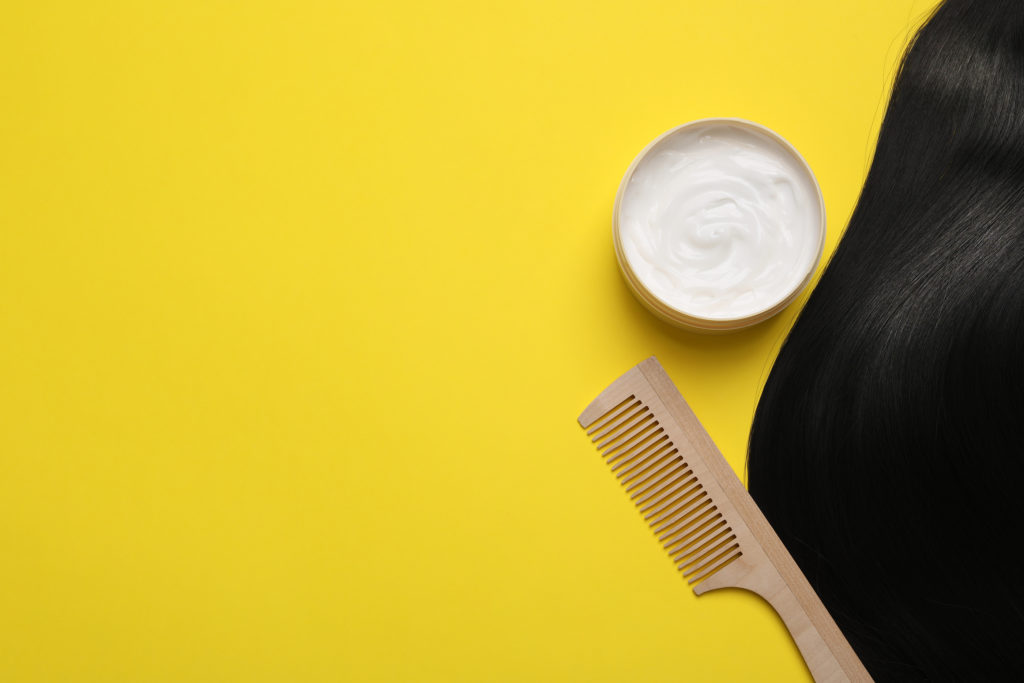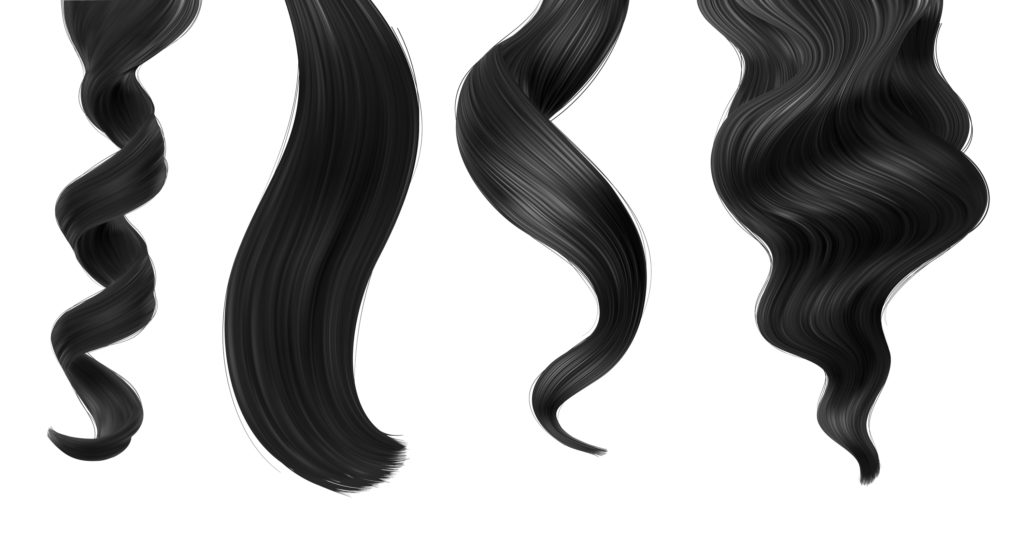Using hair relaxers regularly, defined as at least four times per year, has the potential to significantly increase the risk that the user will develop uterine cancer. Uterine cancer diagnoses have risen substantially over the past several years. Now, researchers suspect that increased hair relaxer use, including use by Black women, has increased the odds that women will develop uterine cancer.
Uterine cancer can cause a number of damaging effects on the body. Often, the recommended treatment for uterine cancer includes chemotherapy or radiation. Doctors may often recommend a hysterectomy, which can render the woman infertile. Many women struggle with the implications of uterine cancer, from the weight of the diagnosis to its aftermath.
The Sister Study

The Sister Study, led by the National Institutes of Health, followed 33,497 women between the ages of 35 and 74. Among those women, those who reported frequent use of hair straightening products (at least four times in the prior year) were approximately twice as likely to develop uterine cancer compared to women who did not use those products.
Uterine cancer makes up just 3.4 percent of new cancer cases diagnosed yearly. However, uterine cancer rates have risen across the United States recently. Black women face a disproportionate impact from uterine cancer, including twice the deaths from uterine cancer of other ethnic groups.
The Sister Study aimed to identify breast cancer risk in women who had sisters who had already faced a cancer diagnosis. However, due to the study’s ability to follow its participants for multiple years, it also identified several other potential concerns, including the risk of developing cancers like uterine cancer.
The Sister Study took a close look at how genetics and lifestyle factors can increase the risk of developing those cancers, aiming to prevent or decrease breast cancer diagnoses and lead to more positive outcomes for breast cancer patients. However, it also had the chance to identify a number of environmental factors that contributed to other types of cancer.
Endocrine-disrupting Chemicals in Hair Straightener Products
Hair straightener products have some chemicals that can potentially increase the risk of hormonal-related cancers, including uterine and ovarian cancer. Endocrine-disrupting chemicals include any substances that interfere with the body’s normal function. In some cases, endocrine-disrupting chemicals, also known as EDCs, will block natural hormones from doing their jobs in the body, leading to increased cancer risk. They can also create challenges like early puberty and altered nervous system function.
Formaldehyde
Many hair relaxers contain small amounts of formaldehyde, which can potentially increase the risk of several types of cancer, including uterine cancer. According to the FDA, most hair straightening products release formaldehyde during the straightening process.
Formaldehyde may also have immediate health risks, including rashes, breathing problems, or headaches. Long-term exposure to formaldehyde may also increase the risk of developing some types of cancer. Unfortunately, hair relaxer products may cause higher levels of exposure in women who use those products than in the general population.
Oxidized Para-Phenylenediamine
Oxidized para-phenylenediamine, is commonly found in many beauty products including hair dyes and hair straightening products. It is a known skin sensitizer. In addition to posing a cancer risk, oxidized para-phenylenediamine may sensitize the scalp, leading to increased irritation and potentially increasing the risk of sores and cuts, which may lead to greater absorption of damaging products.
Parabens
Many cosmetic products contain parabens, which act as preservatives that help keep cosmetic products fresher and allow them to remain more shelf stable over time. Parabens also, however, can potentially disrupt the endocrine system’s function, which may increase the risk that they will cause damaging health effects. Parabens may bind to estrogen receptors, increasing the risk of developing key types of cancer, particularly hormone-related cancers like uterine cancer. Hair relaxers, like other beauty products, frequently contain parabens.
Bisphenol A
Various plastic and epoxy resin products produce Bisphenol A, or BPA. BPAs can also occur in cosmetic products like hair straighteners. They may lead to several possible health effects, including increasing the risk of high blood pressure or cardiovascular disease. High levels of BPA exposure, which may occur during the use of hair-straightening products, may increase the risk of developing hormone-related cancers, including breast cancer, prostate cancer, and ovarian cancer.
Heavy Metals
Some hair straightener products may have heavy metal content that may increase the risk of developing certain types of cancer. Carcinogenic metals may include arsenic, cadmium, chromium, and nickel. Heavy metal products typically cause gastric cancers; however, they may also contribute to the development of other cancer-related symptoms.
The specific endocrine disruptors in hair relaxers may vary based on the product. However, most hair relaxer products contain potentially damaging chemicals that can increase the risk of endocrine disruption and raise the risk of developing cancer. Researchers continue to look into the specific products in hair relaxers that can increase the risk of developing cancer and how they may impact the body, including how hair relaxer users may avoid those products.
How Endocrine Disruptors in Hair Relaxers May Cause Cancer

Endocrine disruptors, including the chemicals found in many hair relaxer products, interfere with the natural hormone processes in the body. Historically, scientists have chosen to look at endocrine disruptors based on the potential impact of exposure to large quantities of an endocrine-disrupting product within a short period.
Over time, however, the long-term impacts of those products, including increased cancer risk, have grown increasingly obvious. Now, studies aim to take a closer look at what those long-term impacts might look like. However, determining long-term influence can prove more complicated since scientists cannot deliberately expose a group of people to known carcinogens.
Endocrine disruptors may behave in a number of ways that may increase the risk of developing cancer. They may, for example, mimic the effect of a natural hormone by binding to that receptor in the body, which may increase the risk of certain types of cancer since those chemicals are not the same as the natural hormone. In other cases, the disruptor may bind to the hormone receptor but may not create any type of response in the body, causing the body to react as though it has not produced the proper level of that hormone. Endocrine disruptors may also impact the number of receptors available for natural hormones: for example, BPA may change the number of estrogen receptors in the brain.
Studies note that endocrine-disrupting products may increase the growth of some cancer cells, including ovarian cancer cells, in a lab environment. Increased estrogen exposure can increase the risk of developing ovarian cancer. Because some endocrine-disrupting chemicals can create some of the same effects as estrogen, they may increase the risk of developing ovarian cancer or worsen symptoms.
Exposure at a Young Age
Many women begin using hair straightening products at a relatively young age and may continue to use those products throughout their lives. Exposure at a young age can have an even greater impact on a number of risks. Endocrine disruptors can, for example, lead to early puberty in some women. Some scientists suggest that heavy use of these chemical-containing products may have led to a steady reduction in average puberty age.
Exposure at a young age may increase the risk of developing cancer later, especially if women continue to use those products throughout their lives. Early exposure to endocrine disruptors present in products like hair relaxers may also increase the odds of other hormonal challenges and disruptions.
Endocrine Disruptors and the Spread of Cancer
In addition to causing cancer due to their disruption of the endocrine system and its signaling mechanisms, endocrine disruptors may cause cancer to progress more quickly. Cancer cells may reproduce more quickly when exposed to endocrine disruptors in a lab. In many cases, this can lead to a more rapid progression of cancer symptoms.
Unfortunately, in its early stages, many patients do not recognize the symptoms associated with several types of cancer, including ovarian and uterine cancer. For example, women with early-stage breast cancer often have no symptoms, with cancer identified only through routine screening.
That may mean that many women with early cancer symptoms can experience a more rapid spread of cancer due to the endocrine-disrupting chemicals in the products they use regularly, including hair relaxers. That continued exposure may, in part, account for the higher risk of death in Black women with uterine cancer. It may also increase the risk of later-stage diagnosis, which can generally lead to poorer outcomes.
The Increased Impact on Black Women
Black women in America have, for many years, faced a certain level of beauty discrimination: one that grows ever more apparent in light of the link between cancer and the products those women often feel the need to use regularly. Black women tend to spend more on beauty products than other women. According to one study, despite accounting for around 13 percent of the population, Black women make around 22 percent of beauty product purchases.
The average woman across the United States uses around 12 beauty products daily. Many women, including Black women, may use even more of those products as they aim to meet impossible beauty standards. The average Black woman visits a salon more than twice a month. At least every month, for many women, that visit may include using a hair relaxer since beauty professionals recommend touching up relaxed hair approximately every eight weeks.
That can add up to a lot of chemical exposure over the course of the year since The Sister Study identified using those products more than four times a year as creating a significant risk of developing cancer. Unfortunately, higher levels of chemical exposure may significantly increase the risk of developing uterine cancer and other devastating cancers, and Black women continue to face an increased risk.
Endocrine disruptors like those present in hair relaxer products may partially account for the damaging impact of cancer on that community. Black women may also have a harder time getting medical care providers to take them seriously and may receive less preventative care or early diagnostic procedures, both of which can decrease the odds of devastating impact from a cancer diagnosis.
Do You Deserve Compensation if You Developed Cancer Due to Hair Relaxer Use?
Many women continue to use hair relaxers and other chemical-containing products regularly, despite knowing the potential dangers that may go along with them. Others may never know about the potential risk. If you developed cancer from using a hair relaxer product, or if your cancer progressed faster due to those products, you may have the right to compensation for the damages you sustained.
That may include compensation for:
- The medical bills associated with cancer treatments, which can quickly rise higher than anticipated
- The wages you lost if you could not work or had to give up your job as a result of a cancer diagnosis
- The pain and suffering you experienced as a result of a cancer diagnosis related to hair relaxer use
- The loss of a loved one to cancer associated with hair relaxer use
If you suffered a cancer diagnosis due to using hair relaxer products regularly, working with a hair relaxer cancer lawyer can offer your best chance of identifying the full compensation you deserve for those damages and establishing the evidence you need to confirm that your diagnosis resulted from hair relaxer use.
Contact a mass tort attorney as soon after your diagnosis as possible to start filing a hair relaxer cancer lawsuit or to learn more about your rights and the compensation you likely deserve.
